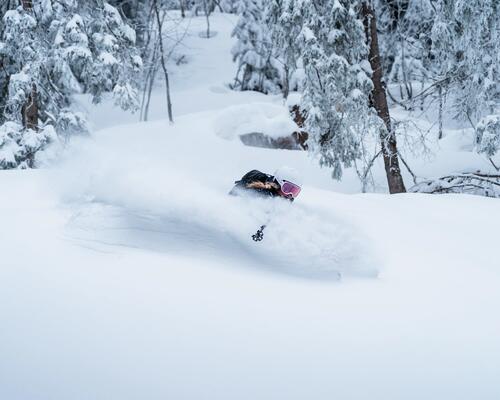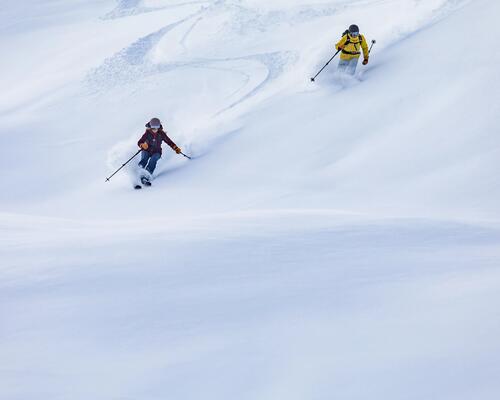To the naked eye, the waist width is what distinguishes a freeride ski from a downhill ski. Located underfoot, the waist width is an essential component of your skis. The larger it is, the more lift the ski has on powder. On average, it is between 70 and 85 mm on a downhill ski.
On a freeride ski, the width can go up to 130 mm! The width for a fairly multi-purpose ski is between 90 and 105 mm, wider for more exclusive ski, particularly for use on powder.
A freeride ski can be used on the slopes but it will be more physical and difficult to ski. If you like to mix freeride with cutting beautiful curves on the slopes, go for skis no wider than 95 mm.








